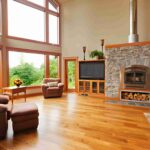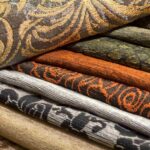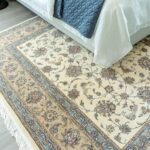When it comes to enhancing the beauty and value of your home, few options can compare to the timeless elegance of hardwood flooring. With a variety of styles, finishes, and types to choose from, hardwood floors can complement any décor and lifestyle. In this article, we’ll explore nine popular types of hardwood flooring and offer tips on how to choose the perfect one for your home.
1. Oak Hardwood Flooring

Oak is a classic choice for hardwood flooring, known for its durability and rich grain patterns. It comes in two main types: red oak and white oak. Red oak has a warm, reddish tone and a more pronounced grain, while white oak offers a slightly harder, cooler-toned option. Oak is versatile and suits a wide range of interiors.
| Pros | Cons |
|---|---|
| Widely available and cost-effective | Can be prone to scratches without proper care |
| Durable and long-lasting | |
| Takes stains well |
2. Maple Hardwood Flooring

Maple hardwood flooring features a lighter color and a smooth, even grain, making it ideal for modern and contemporary spaces. It’s harder than oak, providing excellent resistance to wear and tear.
| Pros | Cons |
|---|---|
| High durability | More challenging to stain evenly |
| Light color brightens up spaces | Can turn yellow with prolonged exposure to sunlight |
| Less pronounced grain for a sleek look |
3. Hickory Hardwood Flooring

Hickory is one of the hardest domestic woods, offering exceptional resilience. It has a distinctive grain pattern with a mix of light and dark streaks, creating a rustic and natural appearance.
| Pros | Cons |
|---|---|
| Extremely durable | Harder to install due to its hardness |
| Unique, striking appearance | Limited availability in certain areas |
| Great for high-traffic areas |
4. Cherry Hardwood Flooring

Cherry hardwood floors are known for their rich, warm colors and smooth grain. Over time, cherry wood darkens to a beautiful, deep red-brown color, adding character and elegance to any room.
| Pros | Cons |
|---|---|
| Gorgeous natural color and grain | Softer wood, more susceptible to dents and scratches |
| Darkens beautifully with age | Can be more expensive |
| Easy to work with |
5. Walnut Hardwood Flooring

Walnut offers a luxurious dark brown hue with a straight, fine grain. It’s a softer hardwood, but its rich color and smooth texture make it a popular choice for upscale interiors.
| Pros | Cons |
|---|---|
| Stunning dark color and smooth texture | Less durable due to its softness |
| Adds a touch of luxury | More expensive than other hardwoods |
| Easy to stain |
6. Birch Hardwood Flooring

Birch hardwood flooring ranges in color from creamy yellow to dark brown, with a fine, wavy grain. It’s a flexible option that complements both modern and traditional environments.
| Pros | Cons |
|---|---|
| Wide color range | Harder to stain uniformly |
| Unique grain pattern | Can be prone to scratches |
| Relatively affordable |
Pros | Cons |
|---|---|
| Environmentally friendly | Can be sensitive to humidity |
| Durable and strong | Quality varies by manufacturer |
| Unique, modern look |
8. Ash Hardwood Flooring

Ash hardwood flooring is light in color, with a straight grain that provides a clean, contemporary look. It’s a durable choice, similar in hardness to oak, making it suitable for busy households.
| Pros | Cons |
|---|---|
| Light color brightens up rooms | Less common, can be harder to find |
| Durable and resilient | More expensive than some other options |
| Clean, modern appearance |
9. Mahogany Hardwood Flooring

Mahogany is prized for its deep, reddish-brown color and smooth grain. It’s a dense, durable hardwood that adds a sense of richness and luxury to any space.
| Pros | Cons |
|---|---|
| Rich, elegant color | Can darken significantly over time |
| Highly durable and long-lasting | High cost |
| Resists wear and tear well |
How to Choose the Right Hardwood Flooring
10 Factors to Consider When Choosing Hardwood Flooring
Choosing the perfect hardwood flooring for your home involves considering a variety of factors to ensure you select the option that best suits your needs and preferences. The following ten points are crucial to remember:
1. Durability: Consider the level of foot traffic in the area where the hardwood flooring will be installed. Choose a hardwood species with the appropriate hardness and resilience to withstand wear and tear over time.
2. Wood Species: Different hardwood species offer unique colors, grain patterns, and characteristics. Oak, maple, hickory, cherry, walnut, birch, bamboo, ash, and mahogany are popular options, each with its own aesthetic appeal and durability.
3. Color and Grain: Think about the desired look and feel of the space. Lighter woods like maple and ash can brighten up a room, while darker woods like walnut and mahogany add warmth and richness. Consider the grain pattern and whether you prefer a more pronounced or subtle texture.
4. Finish Type: Choose between prefinished and site-finished hardwood flooring. Prefinished flooring is factory-finished with multiple coats of sealant, offering enhanced durability and easier installation. Site-finished flooring allows for customization of the stain and finish but may require additional time and effort.
5. Width and Length of Planks: Hardwood flooring comes in various plank widths and lengths, allowing for different installation patterns and aesthetics. Consider the size of the room and your desired visual impact when selecting plank dimensions.
6. Installation Method: Determine whether you prefer nail-down, glue-down, or floating installation methods. Nail-down installation provides a secure and stable floor but requires professional installation. Glue-down and floating methods offer easier DIY installation but may have different requirements for subfloor preparation.
7. Budget: Establish a budget for your hardwood flooring project, taking into account the cost of materials, installation, and any additional expenses such as subfloor preparation and floor accessories. Compare prices and consider the long-term value of investing in high-quality hardwood flooring.
8. Maintenance Requirements: Consider the level of maintenance and upkeep required for different hardwood species and finishes. Some woods may be more prone to scratches, while others may require periodic refinishing to maintain their appearance.
9. Environmental Impact: If sustainability is a concern, choose hardwood flooring certified by organizations such as the Forest Stewardship Council (FSC) or look for options made from rapidly renewable resources like bamboo. Consider the environmental impact of the manufacturing process and transportation of the materials.
10. Lifestyle and Use: Take your lifestyle and household needs into account when choosing hardwood flooring. Consider factors such as pets, children, allergies, and moisture levels in the environment. Select a hardwood species and finish that can withstand the demands of your daily life while maintaining its beauty and integrity.
By carefully considering these ten factors, you can make an informed decision and choose the perfect hardwood flooring that enhances the beauty, comfort, and value of your home for years to come.
Conclusion
Choosing the right hardwood flooring for your home is an important decision that can significantly impact both the aesthetics and value of your space. With options ranging from the classic appeal of oak to the luxurious elegance of walnut, there’s a perfect hardwood floor for every style and budget. Consider the durability, maintenance needs, and environmental impact of each type, and think about how the wood’s color and grain will complement your interior design. By taking these factors into account, you can select hardwood flooring that not only enhances your home’s beauty but also stands the test of time, providing warmth and elegance for years to come. With the right choice, your hardwood floors will become a cherished feature of your home, offering both functional benefits and timeless charm.
Top 5 FAQs on Hardwood Flooring
1. What is the most durable type of hardwood flooring?
Hickory is considered one of the most durable types of hardwood flooring due to its hardness and resilience. Other highly durable options include maple and oak, which are also well-suited for high-traffic areas.
2. How do I maintain and clean my hardwood floors?
To maintain hardwood floors, regularly sweep or vacuum to remove dust and debris. Clean spills immediately to prevent damage. For a deeper clean, use a damp mop and hardwood floor cleaner. Avoid using water and vinegar, soap-based cleaners, or steam cleaners, as these can damage the wood and finish.
3. Can hardwood flooring be installed in kitchens and bathrooms?
While hardwood flooring can be installed in kitchens, it’s essential to ensure proper sealing and regular maintenance to protect against moisture. For bathrooms, it’s generally not recommended due to the high humidity and potential for water damage, but engineered hardwood may be a more suitable option if you want the look of wood.
4. How do I choose the right finish for my hardwood flooring?
The right finish depends on your lifestyle and desired look. For high-traffic areas, a polyurethane finish offers excellent durability and easy maintenance. For a more natural look, consider an oil-based finish, which can be easier to touch up but may require more frequent maintenance.
5. Is hardwood flooring a good investment for my home?
Yes, hardwood flooring is generally considered a good investment. It adds significant value to your home, offers timeless appeal, and can last for decades with proper care. Additionally, hardwood floors are a desirable feature for many homebuyers, potentially increasing your home’s resale value.






